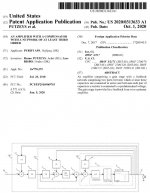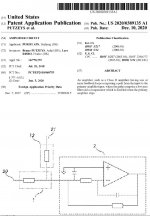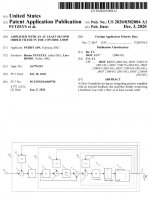I think he is talking about harmonics or dumping factor, not frequency itself. Mimicking lower damping factor amp with bass EQ would not be a terrible idea depends on situation / preference.
Controlling H2 /H3 has been popular on Pass forum, and I add some low frequency H2 / H3 for Class-D amp, which actually sounds pretty good to my ears for casual listening. We can find some free VST plugins adding harmonics, so I would recommend to try one if the music source is something like Audivana.
If you would like to mimick low dampening factor, just ad a series resistor or use very thin and long speaker cables. Apart from that I don't agree. Class d amps are as different from each other as AB amps. You can have both low and high dampening factor in both, and almost any other factor can be different.
All music is produced for A and AB class amplifiers and will never sound as good as it should on a class D.
Well, if you are only listening to pre-90's music, it's might be true to some degrees, but today, by far the most popular amp is class D. Studio monitors, car audio, iPhone, computer, sound bar, all come with class-D. Also everyone was using tube amps pre-70's, and what about the difference between SE vs PP.
My point is a smart person is choosing his amp based on his preferences, not based on dogmas like you mentioned. A person who mainly listens to old Jazz may naturally choose tube amp, and a person who wants to listen to only dubstep loudly should choose Class-D. Class-D is a versatile choice for many people, imo.
Last edited:
All music is produced for A and AB class amplifiers and will never sound as good as it should on a class D. Without some sort of signal processing or an equaliser a class D will lack warmth but have higher definition. This is not a flaw in class D amplification, it is just physics. I use Audirvana on a Mac with a free 64bit equaliser and just adjusting the levels by only tiny amounts it changes the sound drastically, I can add warmth without losing any clarity/definition. For those who feel it is important that the signal is bit perfect I would say, why don’t all DACs sound the same? Each DAC does its own thing to the bits, they don’t all convert the same way. It is important to use a good equaliser, I tried a few that were terrible and in the end I went with one by Tokyo Dawn Records that when almost flat I could not tell it was active. This is just my opinion, but the point I am trying to make is that music has not been produced for class D and music levels are a slightly wrong for it. I have only experimented using an equaliser for about week but have been amazed what a subtle adjustment could do.
So all A and AB amos sound the same and all class d sound the same?
That is a very valid point. I do listen mostly to pre 90’s music and now that you have mentioned this I have to agree with you to some extent. I do listen to some newer music and I admit then it is not always a problem. Solena Gomez - Rare and Macy Grey - Ruby both have some warmth when listened to flat which proves your point. It does cause a dilemma as to how you set up your music player. It is easy to turn on and off the equaliser but I have only needed to make minor adjustments to bring some warmth. My first decent stereo that I bought was a Yamaha AX482 amp (I think that is the model I had) with MS50i speakers and this produced a very warm natural sound that I miss a bit. I do like the detail the class D brings and I am close to finding a setup that I like. I do listen to several hours of music a day, this is why it is important to me.
ElliJ, please try a free harmonics plugin. This one is good. You can change phase and level of each harmonic content.
HoRNet Harmonics, free waveshaper VST, AAX and Audio units plugin
HoRNet Harmonics, free waveshaper VST, AAX and Audio units plugin
Last edited:
ElliJ, please try a free harmonics plugin. This one is good. You can change phase and level of each harmonic content.
HoRNet Harmonics, free waveshaper VST, AAX and Audio units plugin
I will when I get back to the UK, I’m in Germany for the weekend. Try Nova and let me know what you think.
They do not all sound the same by any means but class a amps generally sound warmer than class ab and they both sound warmer than class d. I did not say they sound the same.
This is not my experience, and I have heard a lot of amps, and also worked a bit in recording studios.
They do not all sound the same by any means but class a amps generally sound warmer than class ab and they both sound warmer than class d. I did not say they sound the same.
This thread is about circuitry and science of the state of the art in Class D.
Please don't post unsubstantiated claims.
If you do have valid evidence then present the test method, equipment tested, sample size and other relevant statistics - confidence interval, P level etc.
Best wishes
David
Third world doesn't build novel amps 
IMHO, Indonesia is not a part of the third world anymore. Granted, I've only been to Bali and Western Java, which are more economically advanced regions. Still, the infrastructure development approach and mentality of the most people I've met there in 2019 - who came from all over Indonesia - wasn't third world at all. They no longer think about just surviving, they are thinking about how to get to the bright future I believe they deserve: the population is young, reasonably well educated, and willing to work hard.
Greetings from third world style
IMHO, Indonesia is not a part of the third world anymore. Granted, I've only been to Bali and Western Java, which are more economically advanced regions. Still, the infrastructure development approach and mentality of the most people I've met there in 2019 - who came from all over Indonesia - wasn't third world at all. They no longer think about just surviving, they are thinking about how to get to the bright future I believe they deserve: the population is young, reasonably well educated, and willing to work hard.
This is a classAB but it also has switched feedback on clipping:
An experimental 4-th order linear audio power amplifier - Page 1
An experimental 4-th order linear audio power amplifier - Page 1
This is a classAB but it also has switched feedback on clipping:
An experimental 4-th order linear audio power amplifier - Page 1
It seems like a waste of effort & complexity for a class AB amplifier.
The Purifi US patent applications published Oct 1, Dec 3 & Dec 10, 2020...
These seem to be basically the US applications for the already published patents.
But worth a second look anyway.
This is a classAB but it also has switched feedback on clipping:
An experimental 4-th order linear audio power amplifier - Page 1
Thank you for the link, I hadn't seen that one before, GK's work is always worth study.
It is possible to achieve absurdly low distortion levels in a Class H amp even without resort to conditional stability and the complications shown in the thread.
So I don't plan to use such a scheme myself but the thread is a lot of fun.
What I did eventually settle on is to use a hybrid, a Class H amp with Bode Maximum Feedback type control loop but switch mode controlled rails for efficiency.
Despite all the discussion of SOTA Class D, the hybrid scheme seemed a better balance.
Best wishes
David
These seem to be basically the US applications for the already published patents.
But worth a second look anyway..........
Which already published patents? European?
These are assigned to Purifi, not Hypex.
- Status
- This old topic is closed. If you want to reopen this topic, contact a moderator using the "Report Post" button.
- Home
- Amplifiers
- Class D
- Current state of the art Class D?


